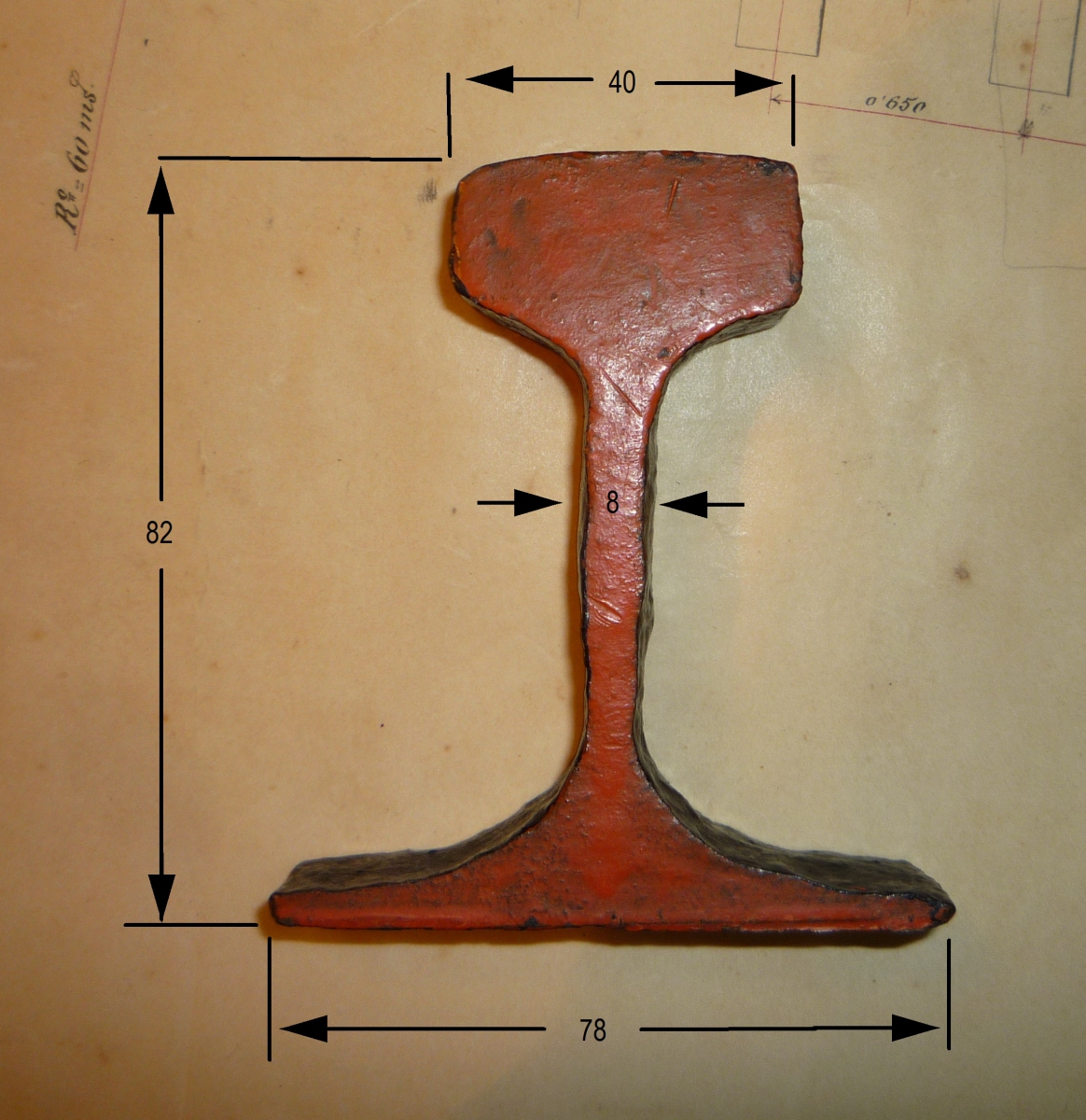Profil of the track
The track was purchased in 1880 from Caramin et Cie. of Thyle-Château (Belgium). Made of Bossomer steel, it had a weight of 16,016 kg. per  meter. The rail was of the Vignole type, measuring:
meter. The rail was of the Vignole type, measuring:
- 90 mm high
- 80 mm of web
- 9 mm d'ànima
- 40 mm of head
They was delivered in 7.60 metre bars.
The track was guaranteed for 25 years, but given its nature it lasted much longer; in some sections it lasted practically the lifetime of the line until its closure. Over the years the track wore unevenly, and was repaired in a singular way: the most worn rails in the curves were transferred to the secondary station tracks and vice-versa.
In the photo on the right you can see the profile of a track at the end of its useful life after the closure, and you can see how it has retained the original measurements given in the previous paragraph. Due to wear and tear it has lost height and due to inclemency it has lost the width of the sled and web, but the head has remained the same width, although the rubbing of the flanges has flattened one of the faces.
The rails were placed on wooden sleepers by means of lag bolts or spikes, and only on the sharpest curves were seat plates placed, and sometimes counter rails, varying the space between sleepers, which was smaller on curves and larger on straights.
In the last repairs and track changes, higher RENFE track and RENFE lag bolts were used for replacement, as can be seen in the photo of a sleeper kept by Ramón Piera (son of Martí Piera i Escofet, who was the line's engineer during the SFG's time at EFE and later at FEVE).

|

|

|
As can be seen in the profile or side view the track has a slight inward slope, which caused the wheel flanges to guide the vehicle in such a way that it self-centred on the track. The seat plates and bolts are from the last period, and as can be seen in the photograph they are oversized as they are larger than the usual SFG ones. In any case, the format was very similar to that of the bolts used by RENFE.
Turnouts
There were 62 turnouts on the line, with Gerona (11) and Sant Feliu (19) being the stations with the most turnouts.
The turnouts had a 7-degree tangent and a 60-metre curve. Two different types of turnouts were manufactured, types A and B, the former being slightly longer, with the heart being the same in both types.

See the design View the original document
Note: The measurements of the type A turnout, due to the bad state of the original may not be exact due to possible differences in my appreciation.

See the design View the original document
Original designs of the SFG, year 1890, photo of the track Ignasi Griñón, iGuadix page designs.